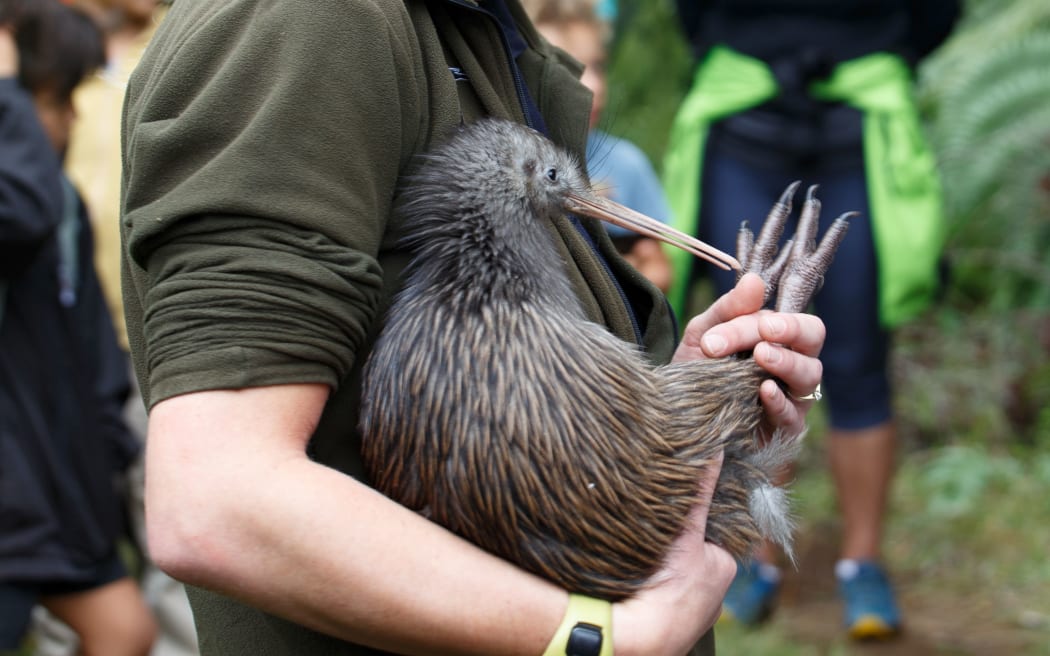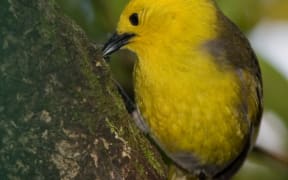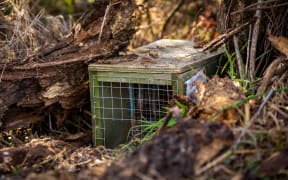
A kiwi being released onto Pukeiti on the Kaitake range in April 2021. Photo: Supplied / Jenny Feaver
The trapping of predators and monitoring of kiwi in Te Papakura o Taranaki are being intensified following the death of two birds in recent weeks.
The kiwi, called Kōwhai and Aroha, were discovered after checks on Kaitake maunga near the national park boundary.
Their deaths are similar to the predation of three kiwi in the same area last year.
Kiwi were reintroduced onto Kaitake in 2021 when 10 birds were released following an intensive years-long trapping programme and use of 1080 poison.
Taranaki Kiwi Trust ranger Toby Shanley said the death of the kiwi were a huge loss for everyone involved.
"It's most likely a ferret is responsible for the death of these birds, but it's also a reminder of the threat cats and dogs pose to kiwi."
Rangers and volunteers from Kaitake Ranges Conservation Trust, Taranaki Kiwi Trust, Te Ara Taiao, Taranaki Mounga Project, Conservation Department and schools were laying out more ferret traps, along with upping the checking of kiwi from every week to twice a week, Shanley said.
This year 21 kiwi have been released on Taranaki Maunga and Kaitake, joining a growing population of up to 40 on Kaitake. The birds were particularly vulnerable at this time of year as they start laying eggs and nesting (currently seven monitored kiwi are nesting).
Taranaki Mounga project operations manager Ngahina Capper said the dead kiwi were found within Te Papakura o Taranaki (formerly Egmont National Park) not far from the boundary, similar to three kiwi deaths last year.
"It goes to show the importance of the mahi of all the predator work being done collectively, and especially the work being done in and around the boundary line to prevent re-incursion of predators.
"It's distressing for us to have any kiwi die, and we need to learn from this and ensure it helps us achieve our long-term goal of ridding the area of predators and pests so native species can fully flourish once again," Capper said.
A wānanga was being planned to discuss the kiwi deaths and responses to predator incursions, which would involve the restoration/conservation community.
Kiwi releases can continue on Kaitake despite kiwi deaths
Conservationists say the release of kiwi can continue on Kaitake mounga in Te Papakura o Taranaki despite the deaths of five birds.
Taranaki Mounga Project said its permit to release kiwi on Kaitake allowed for a 5 percent death rate.
This year, 21 kiwi have been released on Taranaki Maunga and there are about 40 on Kaitake.
Kiwi were reintroduced onto Kaitake in 2021 after a years-long trapping programme and the use of 1080 poison.





